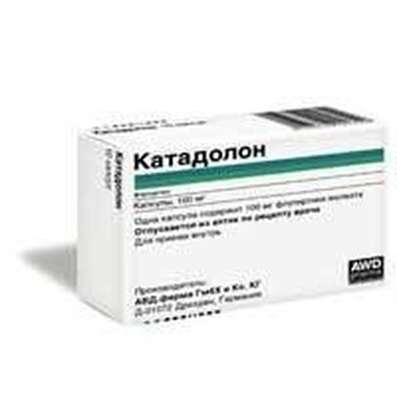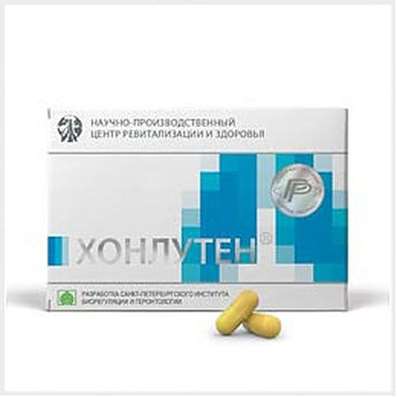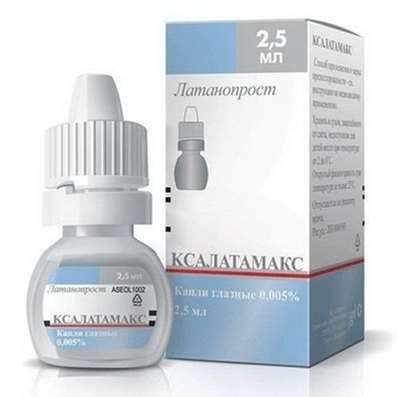Instruction for use: Phenazepamum
I want this, give me price
Dosage form: Solution for intravenous and intramuscular administration; Substance-Powder; Tablets
Active substance: Bromdihydrochlorphenylbenzodiazepine
ATX
N05BX Other anxiolytics
Pharmacological group:
Anxiolytics
The nosological classification (ICD-10)
F06.6 Organic emotionally labile [asthenic] disorder: Somatogenic depression; Somatogenic psychosis
F29 Inorganic psychosis, unspecified: Childhood psychoses; Psychomotor agitation in psychoses; Hallucinatory-delusional disorders; Hallucinatory-delusional syndrome; Intoxication psychosis; Manic-delusional disorders; Manic chronic psychosis; Manic psychosis; Acute psychosis; paranoid psychosis; Paranoid psychosis; Subacute psychosis; Presenile psychosis; Psychosis; Intoxicating psychosis; Psychosis is paranoid; Psychosis in children; Reactive psychosis; Chronic psychosis; Chronic hallucinatory psychosis; Chronic psychosis; Chronic psychotic disorder; Schizophrenic psychosis
F40 Phobic anxiety disorders: A state of fear; Fear; Phobia; Phobic disorders; Phobias; Anxiety neurosis; Anxiety of anxiety; Obsessive fears; Acute anxiety disorder; Paroxysmal fear syndrome; Feeling of fear; Night Fears
F40.9 Phobic anxiety disorder, unspecified:Obsessive fear; Anxiety neurosis; Neurosis of anxiety; Acute anxiety disorder; Syndrome of paroxysmal fear; State of fear; Phobias; Phobic disorders; Feeling of fear
F41 Other anxiety disorders: Anxiety status; Anxiety; Chronic alarm; Sense of anxiety; Anxious-hypothetical states; Stopping an alarm; Nonpsychotic anxiety disorders
F41.9 Anxiety disorder, unspecified: Neurotic disorders with anxiety syndrome; Severe anxiety; Neuro-like symptomatology; Neuro-like disorders; Neuro-like conditions; Neuroses with anxiety symptoms; Neuroses with a sense of anxiety; Acute situational and stress anxiety; Acute attack of anxiety; Severe Anxiety; Situational Anxiety Disorder; State of anxiety; Anxious and delusional component; Alarming state; Anxiety; Anxiety Disorders; Anxiety syndrome; Sense of anxiety; Alarm conditions; Chronic neurotic anxiety; Susto; Psychopathy with a predominance of anxiety and anxiety; Anxiety disorders in neurotic and neurosis-like states; Anxious neuroses; Anxious and delusional state; Acute situational stress alarm; Depressed mood with elements of anxiety
F45 Somatoform disorders: Psychosomatic disorder; Psychosomatic disorders; Psychosomatic diseases; The state of excitement in somatic diseases; Functional psychosomatic disorders of the cardiovascular system
F45.2 Hypochondriacal disorder: Hypochondriac and asthenoipochondrial condition; Hypochondria; Sesto-hypochondriacal disorders; Asthenoepochondrial phenomena; Hypochondriacal disorders; Hypochondriac neurosis; Hypochondriacal-senesthetic syndrome
F48 Other neurotic disorders: Neurosis; Neurological diseases; Neurotic disorders; Neurotic condition; Psychoneurosis; Anxious-Neurotic Conditions; Chronic neurotic disorders; Emotional reactive disorders
F48.0 Neurasthenia: Asthenic form of neurasthenia; Asthenoneurotic disorder; Astheno-neurotic state; Flu of young workaholics; Influenza yuppie; Neurasthenic disorders; Neurasthenic conditions; Neurasthenic syndrome
F48.9 Neurotic disorder, unspecified: Neurosis; Secondary neurotic symptom; Other neurotic conditions; Neurosis with increased irritability; Neuroses; Neuroses of all kinds; Neuroses with retardation; Neuroses of the heart; Neurotic disorders in alcoholism; Neurotic disorders with retardation; Neurotic disorders with anxiety syndrome; Neurotic reactions; Neurotic symptoms with alcoholism; Neurotic states; Neurotic syndrome; Neurotic disorder; Attack of neurological dysfunction; School neurosis; Emotional Stress
F51.0 Insomnia of inorganic etiology: Situational insomnia; Situational sleep disorders
F60.2 Dissocial personality disorder: Antisocial personality; Psychopathic personality; Psychopathy; Psychopathy of an excitable type; Psychopathy and psychopathic conditions; Psychopathy of a hysterical type; Psychopathy with a predominance of anxiety and anxiety; Braking Personality
F60.3 Emotionally unstable personality disorder: Mood swings; Mental lability; Emotional fence; Emotional detachment; Mood Change; Lability of mood; Instability of emotional background; Mixed emotional disorders; The state of emotional stress; Emotional lability; Emotional tension; Emotional instability; Emotional instability; Mood disturbance; Mood disorders; Decreased mood; Deterioration of mood; Mood swings
F95 Teaki: Teak child; Children's teak; Nerve Teacks in Children; Nervous teack; Teak
G25.9 Extrapyramidal and motor derangement, unspecified: Bradykinesia; Motor anxiety; Movement disorders; Muscle rigidity; Muscular spasticity; Pyramidal disorder; Defeat of the pyramid pathways; Rigidity of muscles; Extrapyramidal syndrome; Spastic paralysis; Extrapyramidal hyperkinesis; Muscle Stress; Meiji syndrome
G40 Epilepsy: Atypical convulsive seizures; Atonic seizures; Great seizures; Large convulsive seizures; Generalized Absences; Jackson epilepsy; Diffuse large seizure; Diencephalic epilepsy; Cortical and non-convulsive forms of epilepsy; Primary-generalized seizures; Primary-generalized tonic-clonic seizure; Pycnoleptic absence; Repeated epileptic seizures; Attack generalized; Seizure fit; Refractory epilepsy in children; Complicated convulsive seizures; Mixed seizures; Mixed forms of epilepsy; Convulsive condition; Convulsive seizures; Convulsions; Convulsive forms of epilepsy; Epilepsy grand mal; Epileptic seizures; Great seizures in children
G40.0 Localized (focal) (partial) idiopathic epilepsy and epileptic syndromes with convulsive seizures with focal origin: Temporal epilepsy; Temporal seizures Partial form of epilepsy; Partial epilepsy; Partial cramps; Partial fit; Partial attack; Partial tonic-clonic seizure; Partial epileptic fit; Partial epileptic seizure; Focal seizures; Focal seizures; Focal fit; Focal epilepsy
G40.8 Other specified forms of epilepsy: Alcoholic epilepsy; Local forms of epilepsy Myoclonic epilepsy; Myoclonus-epilepsy; Juvenile myoclonic epilepsy
G47.0 Disorders of falling asleep and maintaining sleep [insomnia]: Insomnia; Insomnia, especially difficulty falling asleep; desynchronosis; Prolonged sleep disturbance; Difficulty falling asleep; Short-term and transient insomnia; Short-term and chronic sleep disorders; Short or shallow sleep; Violation of sleep; Disturbed sleep, especially in the phase of falling asleep; Infringements sleep; sleep disturbances; Neurotic sleep disturbance; Shallow superficial sleep; shallow sleep; Poor quality of sleep; Night awakening; sleep Pathology; Postsomnic violation; transient insomnia; Trouble falling asleep; Early awakening; Early morning awakening; Early awakening; sleep disorder; somnipathy; persistent insomnia; difficult to fall asleep; difficulty falling asleep; Difficulty falling asleep in children; persistent insomnia; Worsening sleep; Chronic insomnia; Frequent night and / or early morning awakening; Frequent nocturnal awakening and a sense of the depth of the non-sleep; Night waking
G90 Disorders of autonomic [autonomous] nervous system: angiodystonia; vasovegetative manifestations; vasomotor dystonia; vegetative dystonia; autonomic dysfunction; vegetative lability; Vegetative-vascular disorders; autonomic dysfunction; vasoneurosis; Vegetative-vascular dystonia; vegetative-vascular disorders; Vegetative-vascular disorders; Dystonia vegetovascular; Dystonia neurocirculatory; neuro disorder; Cardiopsychoneurosis; Neurocirculatory dystonia of hypertensive type; Primary neurovegetative syndrome; The syndrome of vegetative dystonia
R25.8.0 * Hyperkinesis: Hyperkinesis of the Choreic; Hyperkinesis of central origin; Hyperkinesia rheumatic; Hyperkinesis; Floating tremor
R45.0 Nervousness: Stress nervous; Mental stress; State of tension; Stress states; Nervous disorders; Voltage; Tension; Psychoemotional stress; Stress state; Emotional tension; Feeling of inner tension; Psychoemotional stress in stressful situations; Nerve Stress Reactions; Internal stress; The state of persistent mental stress; Tearfulness
R45.4 Irritability and anger: Neurosis with increased irritability; Outbursts of anger; Anger; Resentment; Increased irritability; Increased irritability of the nervous system; Irritability; Irritability in neuroses; Irritability in psychopathic disorders; Symptoms of irritability; Dysphoria
Composition
Tablets - 1 table.
active substance:
Bromodihydrochlorophenylbenzodiazepine (in terms of 100% material) 0.5 mg; 1 mg; 2.5 mg
Auxiliary substances: lactose (milk sugar); potato starch; Povidone (callidone 25); Calcium stearate; talc
Description of dosage form
Tablets are white, flat-cylindrical, with a bevel (for dosages of 0.5 and 2.5 mg), with a facet and a risk (for a dosage of 1 mg).
Pharmachologic effect
Mode of action - anticonvulsant, anxiolytic, myorelaxing, sleeping, sedative.
Pharmacodynamics
Anxiolytic agent (tranquilizer) of benzodiazepine series. Has anxiolytic, sedative-hypnotic, anticonvulsant and central muscle relaxant effect.
Increases the inhibitory effect of GABA on the transmission of nerve impulses. Stimulates benzodiazepine receptors located in the allosteric center of the postsynaptic GABA receptors of the ascending activating reticular formation of the brainstem; Reduces the excitability of subcortical structures of the brain (limbic system, thalamus, hypothalamus), inhibits polysynaptic spinal reflexes.
Anxiolytic action is caused by the influence on the amygdala complex of the limbic system and is manifested in a decrease in emotional tension, easing anxiety, fear, anxiety.
The sedative effect is due to the influence on the reticular formation of the brainstem and the nonspecific nuclei of the thalamus and is manifested by a decrease in the symptomatology of neurotic origin.
The productive symptomatology of psychotic genesis (acute delusional, hallucinatory, affective disorders) practically does not affect, rarely a decrease in affective tension, delusional disorders.
Sleeping effect is associated with depression of the cells of the reticular formation of the brain stem. Reduces the effect of emotional, vegetative and motor stimuli, disturbing the mechanism of falling asleep.
Anticonvulsant action is realized by strengthening presynaptic inhibition, suppresses the spread of convulsive impulse, but does not eliminate the excited state of the focus.
Central miorelaksiruyuschee effect due to the inhibition of the polysynaptic spinal afferent inhibitory pathways (to a lesser extent - and monosynaptic). Perhaps a direct inhibition of the motor nerves and muscle functions.
Pharmacokinetics
After ingestion is well absorbed from the digestive tract, Tmax in blood plasma - 1-2 hours Metabolised in the liver. T1 / 2 - 6-10-18 h. It is excreted mainly by kidneys in the form of metabolites.
Indications for the drug Phenazepamum
Neurotic, neurotic, psychopathic, psychopathic and other conditions, accompanied by anxiety, fear, increased irritability, tension, emotional lability;
Reactive psychoses and hypochondriacelennostepatichesky syndrome (including those resistant to the action of other tranquilizers);
Autonomic dysfunction and sleep disorders;
Prevention of states of fear and emotional stress;
Temporal and myoclonic epilepsy (as an anticonvulsant);
Treatment of hyperkinesias and tics, rigidity of muscles, vegetative lability.
Contraindications
Hypersensitivity (including to other benzodiazepines);
coma;
shock;
Myasthenia gravis;
Closed angle glaucoma (acute attack or predisposition);
Acute alcohol poisoning (with impaired vital functions), narcotic analgesics and hypnotics;
Severe COPD (possibly increased respiratory failure);
Acute respiratory failure;
Severe depression (suicidal tendencies may manifest);
Pregnancy (I trimester); Lactation period;
Children and adolescents under 18 years of age (safety and efficacy not determined).
With caution: hepatic and / or renal insufficiency, cerebral and spinal ataxia, drug dependence in the anamnesis; Propensity to abuse of psychoactive drugs; Organic brain diseases, psychosis (paradoxical reactions are possible), hypoproteinemia, nocturnal apnea (established or presumed), elderly patients.
Application in pregnancy and breastfeeding
In pregnancy, use is only possible for life indications. Has a toxic effect on the fetus and increases the incidence of congenital malformations when used in the first trimester of pregnancy. Admission to therapeutic doses in later pregnancy may cause CNS depression in a newborn. Continuous use during pregnancy can lead to physical dependence with the development of withdrawal syndrome in a newborn. Children (especially at a young age) are very sensitive to the depressing effect of benzodiazepines.
The use immediately before childbirth or during labor can cause a respiratory depression, a decrease in muscle tone, hypotension, hypothermia, and a weak act of sucking (a sluggish child syndrome) in a newborn.
Side effects
From the central nervous system and peripheral nervous system: at the beginning of treatment (especially in elderly patients) - drowsiness, fatigue, dizziness, decreased ability to concentrate, ataxia, disorientation, unsteadiness of gait, slowing of mental and motor reactions, confusion; Rarely - headache, euphoria, depression, tremor, memory loss, impaired coordination of movements (especially at high doses), mood depression, dystonic extrapyramidal reactions (uncontrolled movements, including the eye), asthenia, muscle weakness, dysarthria, epileptic Seizures (in patients with epilepsy); Extremely rare - paradoxical reactions (aggressive outbreaks, psychomotor agitation, fear, suicidal tendencies, muscle spasm, hallucinations, agitation, irritability, anxiety, insomnia).
From the hematopoiesis: leukopenia, neutropenia, agranulocytosis (chills, hyperthermia, sore throat, excessive fatigue or weakness), anemia, thrombocytopenia.
On the part of the digestive system: dry mouth or salivation, heartburn, nausea, vomiting, decreased appetite, constipation or diarrhea; Impaired liver function, increased activity of hepatic transaminases and alkaline phosphatase, jaundice.
From the genitourinary system: urinary incontinence, urinary retention, impaired renal function, decreased or increased libido, dysmenorrhea.
Allergic reactions: skin rash, itching.
Other: addiction, drug dependence, lowering blood pressure; Rarely - impaired vision (diplopia), weight loss, tachycardia.
With a sharp decrease in dose or discontinuation of reception - withdrawal syndrome (irritability, nervousness, sleep disturbance, dysphoria, spasm of smooth muscles of the internal organs and skeletal muscles, depersonalization, increased sweating, depression, nausea, vomiting, tremor, perception disorders, incl. Hyperaemia, paresthesia, photophobia, tachycardia, convulsions, rarely - acute psychosis).
Interaction
With simultaneous use of phenazepam ® reduces the effectiveness of levodopa in patients with Parkinsonism.
Phenazepam ® may increase the toxicity of zidovudine.
There is a mutual enhancement of the effect with simultaneous use of antipsychotic, antiepileptic or hypnotic drugs, as well as central muscle relaxants, narcotic analgesics, ethanol.
Inhibitors of microsomal oxidation increase the risk of toxic effects. Inducers of microsomal liver enzymes reduce efficacy.
Increases the concentration of imipramine in the blood serum.
When used simultaneously with antihypertensive agents, an increase in antihypertensive action is possible.
Against the background of simultaneous administration of clozapine, an increase in respiratory depression is possible.
Dosing and Administration
Inside.
For sleep disorders, 0.5 mg for 20-30 minutes before sleep.
For treatment of nevroticheskih, psychopathic, neurosis-like and psychopathic conditions, the initial dose is 0.5-1 mg 2-3 times a day. After 2-4 days, taking into account the effectiveness and tolerability, the dose can be increased to 4-6 mg / day.
With severe agitation, fear, anxiety, treatment starts with a dose of 3 mg / day, rapidly increasing the dose to obtain a therapeutic effect.
In the treatment of epilepsy - 2-10 mg / day.
For the treatment of alcohol withdrawal - 2-5 mg / day.
The average daily dose is 1.5-5 mg, it is divided into 2-3 doses, usually 0.5-1 mg in the morning and in the afternoon and up to 2.5 mg at night. In neurological practice, in diseases with muscle hypertension, 2-3 mg 1-2 times per day are prescribed.
The maximum daily dose is 10 mg.
To avoid the development of drug dependence in course treatment, the duration of the use of phenazepam is 2 weeks (in some cases, the duration of treatment can be increased to 2 months). With the withdrawal of phenazepam dose reduced gradually.
Overdose
Symptoms: severe depression of consciousness, cardiac and respiratory activity, pronounced drowsiness, prolonged confusion, decreased reflexes, prolonged dysarthria, nystagmus, tremor, bradycardia, shortness of breath or shortness of breath, lowering of blood pressure, coma.
Treatment: gastric lavage, the appointment of activated charcoal,, control of vital body functions, maintenance of respiratory and cardiovascular activity, symptomatic therapy. Hemodialysis is ineffective.
Specific antagonist - flumazenil (in hospital) in / in 0.2 mg, if necessary - up to 1 mg in a 5% solution of glucose or 0.9% solution of sodium chloride.
Special instructions
With renal and / or liver failure and long-term treatment, it is necessary to monitor the picture of peripheral blood and the activity of liver enzymes.
In patients who did not previously take psychoactive drugs, there was a therapeutic response to the use of phenazepam ® at lower doses, compared with patients taking antidepressants, anxiolytics or alcoholism.
Like other benzodiazepines, it has the ability to induce drug dependence during long-term admission in large doses (more than 4 mg / day). With a sudden discontinuation of reception can be noted withdrawal syndrome (including depression, irritability, insomnia, increased sweating), especially after a long reception (8-12 weeks). When patients develop such unusual reactions as increased aggressiveness, acute excitations, feelings of fear, thoughts of suicide, hallucinations, increased muscle cramps, difficulty falling asleep, superficial sleep, treatment should be discontinued.
In the course of treatment, patients are strictly prohibited from drinking ethanol.
The effectiveness and safety of the drug in patients under the age of 18 years are not established.
Influence on the ability to drive vehicles and manage mechanisms. During the treatment period, care must be taken when driving vehicles and engaging in other potentially hazardous activities requiring increased attention and speed of psychomotor reactions.
Release form
Tablets, 0.5 mg, 1 mg and 2.5 mg. For 10 or 25 pcs. In packaging contour mesh of PVC film and aluminum foil printed lacquered. For 50 pcs. In polymer cans with control caps of the first opening. 5 packages of 10 pcs. Or 2 packs of 25 pieces, or 1 can is placed in a cardboard box.
Terms of leave from pharmacies
On prescription.
Storage conditions of the drug Phenazepamum
In dry, the dark place at a temperature of no higher than 25 ° C.
Keep out of the reach of children.
Shelf life of the drug Phenazepamum
3 years.
Do not use after the expiry date printed on the package.

 Cart
Cart





